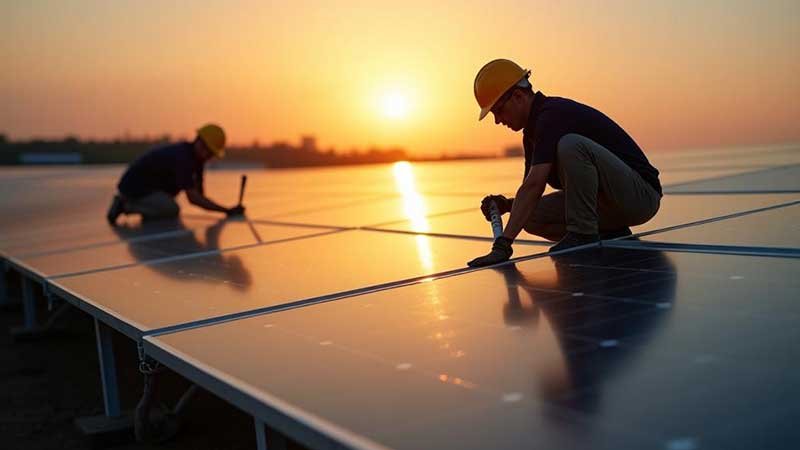Feeling stuck when choosing materials that can withstand the harsh demands of renewable energy applications? You’re not alone. Many professionals grapple with finding solutions that balance durability, efficiency, and cost-effectiveness. The answer might lie in silicone—a versatile material that’s transforming the renewable energy industry.
Silicone is essential in renewable energy technologies, including solar panels and wind turbines, due to its unmatched durability, weather resistance, and flexibility. It ensures long-term performance even in extreme environments, making it a cornerstone of sustainable innovation.
Let’s explore how silicone is shaping the renewable energy landscape, making technologies like solar panels and wind turbines more reliable and efficient.

Why Silicone Is a Perfect Match for Renewable Energy?
Silicone stands out for its resilience and adaptability. In solar panels, silicone acts as a sealant, adhesive, and encapsulant, protecting sensitive components from UV rays, extreme temperatures, and moisture. It prevents damage while maintaining flexibility over decades of exposure.
For wind turbines, silicone’s role is equally significant. It is used in protective coatings, blade adhesives, and electrical insulation. These applications ensure the turbines can withstand high winds, salty sea air, and fluctuating temperatures without compromising performance.
Silicone in Solar Panels: The Backbone of Efficiency
Solar panels operate under grueling conditions, from scorching heat to freezing winters. Silicone helps these panels thrive by:
- Sealing gaps: Silicone sealants keep out dust, water, and air, preventing corrosion and electrical shorts.
- Encapsulation: Silicone encapsulants protect photovoltaic cells from UV degradation while maintaining light transmission.
- Adhesion: It securely bonds components without adding weight or compromising flexibility.
These properties not only extend the lifespan of solar panels but also improve energy efficiency.

Silicone in Wind Turbines: Facing the Elements Head-On
Wind turbines are often deployed in harsh environments, such as offshore locations or desert plains. Silicone makes these installations possible by:
- Coating turbine blades: Protecting against erosion caused by wind, rain, and debris.
- Providing electrical insulation: Ensuring safe and reliable power transmission.
- Adhesive bonding: Holding massive blades together while allowing for slight flex during operation.
Without silicone, the efficiency and lifespan of wind turbines would dramatically decrease.
More Applications of Silicone in Renewable Energy
- Geothermal Energy: Silicone is used in heat-resistant seals and gaskets to manage extreme underground temperatures.
- Energy Storage Systems: Silicone’s thermal stability ensures safer and more reliable battery performance.
These uses highlight silicone’s versatility and growing importance in renewable energy sectors.

Why Choose Silicone for Renewable Energy Projects?
Silicone’s key features—resistance to heat, UV, and chemicals—make it irreplaceable in renewable energy. Its durability minimizes maintenance costs, while its flexibility ensures compatibility with diverse designs.
For businesses looking to stay ahead in sustainability, investing in silicone-based solutions is a no-brainer.
Conclusion
Silicone’s contributions to renewable energy technologies are unparalleled. From extending the life of solar panels to fortifying wind turbines, its role is both functional and transformative. As we push toward a greener future, silicone ensures that renewable energy systems are built to last.
If you’re curious about integrating silicone into your projects, reach out to us. Let’s shape the future of energy together!